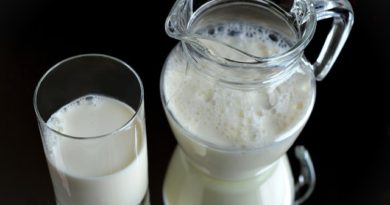Nothing like mother’s milk: potential treatments from stem cells in breast milk
Foteini Hassiotou, University of Western Australia
Researchers have identified stem cells in human breast milk, which behave similarly to embryonic stem cells when cultivated in a medium containing nutrients.
The finding suggests breast milk could be used as a non-invasive and plentiful source of stem cells, which also bypass the ethical concerns surrounding the use of embryonic stem cells, for innovative stem cell therapies.
Stem cell therapy is a promising and rapidly developing field, as it could enable treatment of currently fatal diseases. One of the limiting factors to developing successful therapies is the source of stem cells.
There’s much debate about the ethics of using human embryonic stem cells, which have the potential to differentiate into most human adult cell types.
This ability to differentiate into almost all body cell types makes embryonic stem cells unique, and has not been found in adult stem cells, such as those from the bone marrow.
Stem cells found in breast milk have now been demonstrated to have many of the properties of embryonic stem cells, including the ability to regenerate, but also differentiate into many different body cell types.
Under specific cultivating conditions that mimic the microenvironment of specific organs, breast milk stem cells can turn into various cell types of other organs and tissues, such as bone, cartilage, fat, liver and pancreas.
Based on these findings, breast milk stem cells offer an exciting new opportunity for an ethical, non-invasive and plentiful source of stem cells that can potentially be used in novel stem cell therapies for the benefit not only of the mother and the child, but also other people.
Since these cells display the potential to become insulin-producing pancreatic cells, the discovery could, for instance, open up new avenues for a stem cell-based therapy for diabetes.
And the ability of these cells to turn into nerve cells could allow further applications in treating neurodegenerative diseases, such as Parkinson’s disease.
The enormous potential for using the body’s own (autologous), but also other people’s cells (allogeneic) in stem cell therapies extends to the potential to treat fatal neonatal diseases using breast milk cells.
Breast milk stem cells can also be used as a physiological model to study the malignant transformation that occurs in breast cancer.
This could potentially assist the understanding of what leads to cancer, and how it can be successfully treated.
Finally, the finding also opens a new discussion about the role of these cells for the breast-fed infant.
Breast milk immune cells have been shown to pass through the infant’s gut into the blood circulation and engraft in various tissues.
We hypothesise that stem cells from breast milk are also able to do so, contributing to infant development early in life.
These findings suggest that breast milk is much more than nutrition for the baby, and therefore it can never be replaced or substituted by infant formula.
Future research will examine the potential and properties of breast milk stem cells, including their function in the lactating breast; their normal function(s) in the breast-fed baby; their use as models in breast cancer research; and their potential for in vivo cell transplantation and stem cell therapies.
![]() Breast milk stem cell research holds a lot of promise for our understanding of how the human body works and how disease occurs, as well as for the development of novel therapies for a range of medical conditions.
Breast milk stem cell research holds a lot of promise for our understanding of how the human body works and how disease occurs, as well as for the development of novel therapies for a range of medical conditions.
Foteini Hassiotou, Post-doctoral researcher in Stem Cell biology and Human Nutrition, University of Western Australia
This article was originally published on The Conversation. Read the original article.



